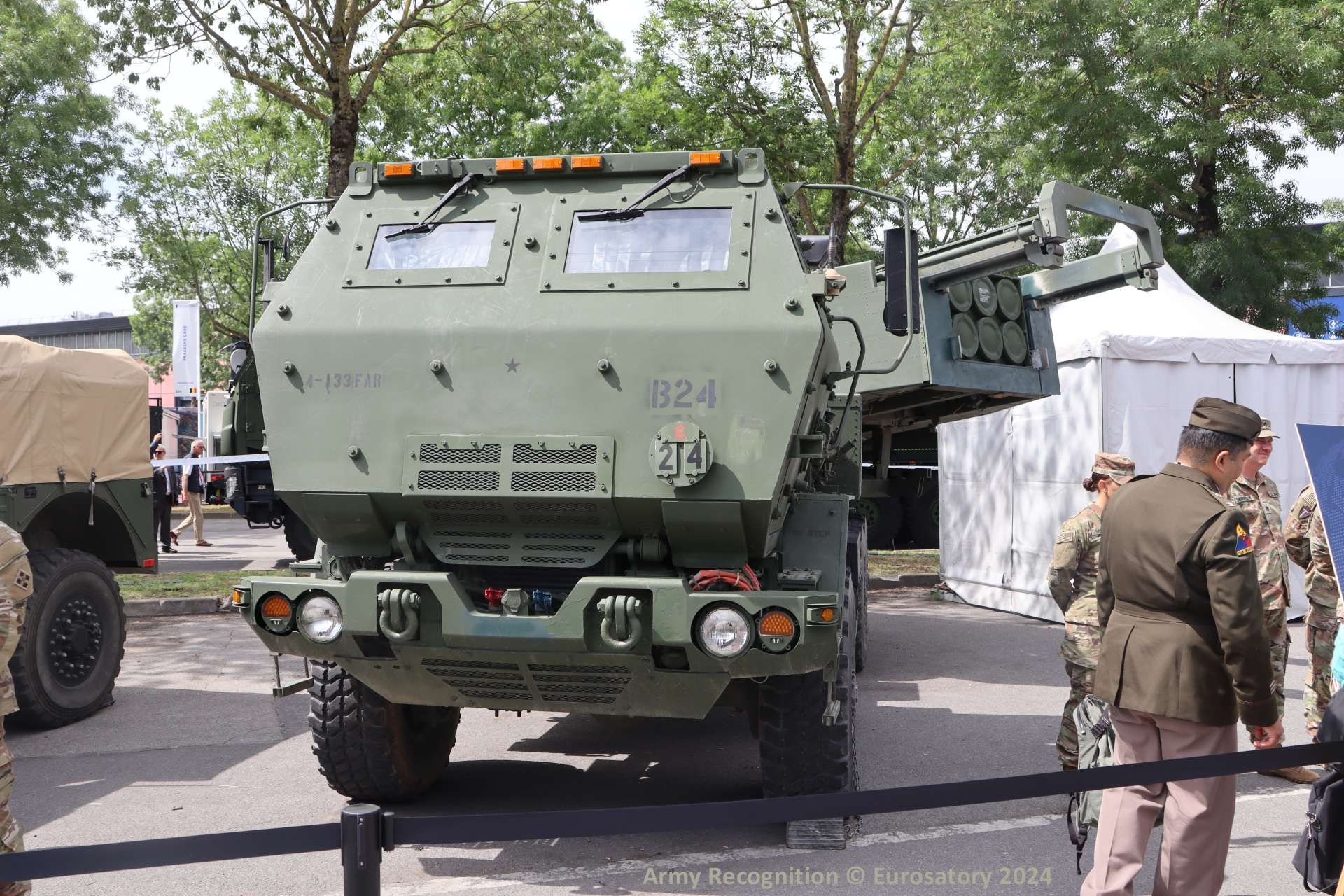Breaking News
US Army deploys M142 HIMARS artillery system in Chile for first time in Southern Fenix 2024 exercise.
On August 24, 2024, the Chilean Army confirmed the arrival of the M142 High Mobility Artillery Rocket System (HIMARS) in Chile as part of Exercise Southern Fenix 2024 (SF24), a multinational military exercise involving Chile, Argentina, and the United States. This exercise, which includes over 600 military personnel, is focused on improving interoperability for multi-domain operations in the Atacama Desert, specifically within the Tarapacá region. The deployment of the HIMARS system is significant as it marks the first time this platform has been used within the U.S. Southern Command (SOUTHCOM) area of operations.
Follow Army Recognition on Google News at this link

The deployment of the HIMARS system in the Southern Fenix 2024 exercise marks the first time this platform has been used within the U.S. Southern Command (SOUTHCOM) area of operations. (Picture source: Chilean MoD)
Southern Fenix 2024 (SF24) is a key exercise aimed at enhancing technical and procedural interoperability between the participating forces while fostering collaboration in hemispheric defense efforts. This exercise, running from August 27 to September 5, 2024, aligns with the SOUTHCOM Campaign Plan and the U.S. National Defense Strategy, with a focus on strengthening security and defense partnerships in the region.
The U.S. contribution to SF24 includes approximately 200 personnel from various units such as U.S. Army South, the 11th Airborne Division, the 75th Field Artillery Brigade, and the 1st Security Forces Assistance Brigade. Additional support is provided by Joint Task Force Bravo, the Joint Communications Support Element, and National Guard units from Texas, Utah, and New York. These U.S. forces will train alongside more than 300 personnel from the Chilean Army’s 6th Division, as well as representatives from the Argentine military.
The exercise will feature several key training events, including the deployment of a HIMARS section and fire direction center, as well as participation from a U.S. Army Airborne company. Training activities will include a combined forcible entry, airfield seizure operations, HIMARS Rapid Integration (HIRAIN) drills, and the Reception, Staging, Onward Movement, and Integration (RSO&I) process. The exercise will conclude with two Live-Fire Exercises (LFX); one focused on maneuver forces and another on rocket artillery, testing the operational capabilities of the HIMARS system in a joint environment.

The M142 High Mobility Artillery Rocket System (HIMARS) began development in the late 1990s and was fully integrated into U.S. Army operations by the early 2000s. (Picture source: Army Recognition)
The M142 High Mobility Artillery Rocket System (HIMARS) was developed in response to a recognized need for a more mobile and quickly deployable artillery system, especially after the Gulf War highlighted the limitations of existing heavier systems like the M270 MLRS. Initiated in the early 1990s by Lockheed Martin, the HIMARS was designed to deliver similar firepower to the M270 but on a lighter, wheeled platform, making it more suitable for rapid deployment. The system began development in the late 1990s and was fully integrated into U.S. Army operations by the early 2000s. Over time, HIMARS has become an integral part of U.S. military operations, with its design focused on mobility and precision to meet modern battlefield needs.
In combat, the HIMARS has demonstrated significant utility due to its precision and versatility. It is equipped to fire six Guided Multiple Launch Rocket System (GMLRS) rockets or a single Army Tactical Missile System (ATACMS) missile, with effective ranges extending up to 300 kilometers. The system has been used in various conflicts, including Iraq, Afghanistan, and more recently, Ukraine. Its design allows for accurate targeting, which is essential in minimizing collateral damage during operations. Additionally, its ability to quickly relocate after launching rockets enhances its effectiveness and reduces its vulnerability on the battlefield.
The HIMARS is currently operated by multiple countries, with the United States being its primary user. Other operators include Romania, Singapore, Poland, the United Arab Emirates, and Ukraine, which has recently incorporated this MLRS into its military operations. Norway and Lithuania are also acquiring the system, reflecting its increasing global adoption. As of 2024, over 400 units have been produced, with production ramping up due to growing global demand. This demand also influenced the development of the newly presented GMARS (Guided Multiple Launch Rocket System), a European alternative to the HIMARS.

The M142 HIMARS is equipped to fire six Guided Multiple Launch Rocket System (GMLRS) rockets or a single Army Tactical Missile System (ATACMS) missile, with effective ranges extending up to 300 kilometers. (Picture source: Army Recognition)


























